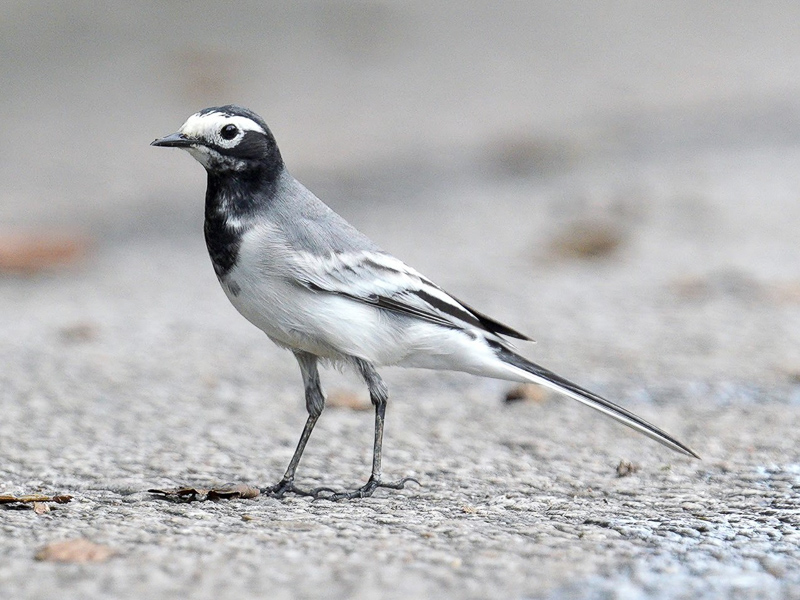White Wagtail Motacilla alba personata 白鶺鴒
Category I. Accidental.
IDENTIFICATION

Oct. 2019, Roman Lo. Adult male.
16.5-18 cm. This taxon has a distinctive white face patch covering forecrown and lores and extending back to a point behind the eye (hence the name ‘Masked Wagtail’) surrounded by black or largely black crown, nape, neck, throat and chest. Adult male in breeding plumage has grey mantle, back, scapulars and lesser coverts, sometimes with blackish admixed and occasionally has a white submoustachial. In winter it has a white upper throat.

Jan. 2022, John Chow.
Adult female in breeding plumage may have less distinct head pattern or greyish in crown and nape. In breeding plumage compared to the male it has more grey in the crown and a less distinct head pattern. First-winter birds generally resemble adult female in winter but may have a yellowish tone to the head (Alström et al. 2003).
VOCALISATIONS
The typical flight call is a double note ‘chee-chik’; also ‘chik’ or ‘chee-chik-chik’. Sometimes similar to that of Grey Wagtail M. cinerea.
DISTRIBUTION & HABITAT PREFERENCE
Has occurred in a variety of open country habitats.
OCCURRENCE
1984: one at Tsim Bei Tsui on 6th and 8 April.
1996: one at Chek Lap Kok during 26-27 March.
2010: one at Ping Che during 16-30 January.
2011: one at Tai Kong Po during 20-21 March.
2019: one at Tam Kon Chau during 13-14 October.
BEHAVIOUR, FORAGING & DIET
Forages by walking or running after insects, and occasionally by leaping up to catch them mid-air or after a short aerial pursuit. No different from other White Wagtail taxa in HK.
RANGE & SYSTEMATICS
Breeds in Central Asia from the Russian Altai and the Sayan Mountains southwest through east and south Kazakhstan, Tian Shan Mountains, west Mongolia and west Xinjiang; winters in Iran, Afghanistan and much of the Indian subcontinent, and rarely in the east of the Arabian Peninsula (Alström et al. 2003).
Polytypic species of many subspecies. Those recorded in HK are leucopsis, ocularis, lugens and personata.
CONSERVATION STATUS
IUCN (Motacilla alba): Least Concern. Population trend stable.
Alström, P., K. Mild and B. Zetterström (2003). Pipits and Wagtails of Europe, Asia and North America. Christopher Helm, London.

